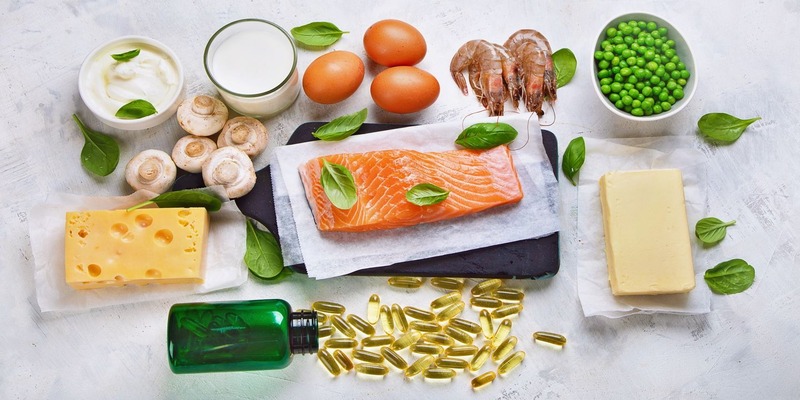5 Delicious And Healthy Foods That Are Loaded With Vitamin D
Jan 27, 2024 By Nancy Miller
Vitamin D and its importance in human health are receiving more attention. Bone health is only one of several biological processes that vitamin D influences. Furthermore, studies have linked insufficient vitamin D levels to an increased likelihood of developing autoimmune illnesses.
Vitamin D deficiency is common. Experts are still arguing what goal levels should be, making it difficult to determine how many individuals are deficient. According to studies, over 24 per cent of Americans don't get enough vitamin D. Perhaps a greater prevalence of deficiencies exists in other parts of the world.
Vitamin D: The Daily Requirement

Vitamin D has an 800 IU DV per day. Vitamin D content is presented as a percentage of the Daily Value on the nutrient information panel on food packaging. The quantity of vitamin D that the meal contributes to your daily intake is listed below. You can acquire vitamin D via food or pills, but they are your best bets.
Ask your doctor if you need to take a vitamin D supplement in addition to getting enough vitamin D through diet and the sun. Furthermore, they can aid in determining whether or not a deficiency exists.
Salmon
Salmon is well-liked because it is high in omega-3 fatty acids and vitamin D. According to the USDA Food Composition Database, one serving of farmed Atlantic salmon offers 66% of the daily value for vitamin D.
The vitamin D concentration of salmon can vary significantly depending on whether it is wild or farmed. Vitamin D levels seem to be higher in wild-caught salmon. Fish collected at different times of the year and in different regions will have varying vitamin D contents.
Herring And Sardines
As a popular fish, herring may be found on menus everywhere. Traditional preparations include smoking or pickling. As a bonus, this little fish is loaded with vitamin D.
A 3.5-ounce fresh Atlantic herring contains 214 IU of vitamin A or 27% of the DV. Pickled herring provides 113 IU, or 14% of the DV, per 3.5-ounce meal, making it a decent alternative to fresh fish if you want to get vitamin D.
The average serving of pickled herring has 870 milligrams of sodium. There might be better choices if you're attempting to limit your sodium intake. Vitamin D is present in large quantities in canned sardines.
Cod Liver Oil
Most people use cod liver oil as a supplement. If you don't care for fish, cod liver oil is a good alternative for getting nutrients that are hard to come by in other ways. Simply put, it's a great place to get your vitamin D.
It contains around 56% of the Daily Value (DV) or about 450 IU per teaspoon. Vitamin D insufficiency has been treated with it for quite some time. This compound has also been used to treat rickets, psoriasis, and TB.
One teaspoon of cod liver oil has 150% of the daily value for vitamin A. Too much vitamin A is dangerous. Overdosing on vitamin A is not recommended, and 3,000 mcg is the maximum daily allowance. Approximately 1,350 mcg of vitamin A may be found in only one spoonful of cod liver oil.
Canned Tuna
Canned tuna is popular because it is convenient and delicious. In most cases, this option is more cost-effective than purchasing fresh fish. In a 3.5-ounce (100-gram) serving, canned light tuna provides 269 IU of vitamin D, which is 34% of the DV.
A lot of fish contain high levels of the heavy element mercury. Larger fish tend to have higher mercury concentrations than their smaller counterparts. The mercury content of canned tuna varies by species.
Smaller fish are used for making light canned tuna, so it has less mercury. Mercury levels are greater in white canned tuna. An accumulation of methylmercury in the body is possible over time. It has the potential to cause major health problems in certain people.
Egg Yolks

Vitamin D may also be obtained from foods other than fish. Whole eggs are a great meal and a great source of nutrition. The yolk contains most of the egg's fat, vitamins, and minerals, whereas the white contains most of the egg's protein.
One big egg's yolk has 37 IU of vitamin D, equivalent to 5% of the daily requirement. Vitamin D in egg yolks might vary depending on a few things.
Vitamin D in the egg may be increased by combining chicken exposure to sunlight, feed high in vitamin D, and UV light exposure of the liquid yolk. Chickens grown on pasture in the fresh air and sunshine lay eggs with three to four times the levels of those laid by caged hens.







